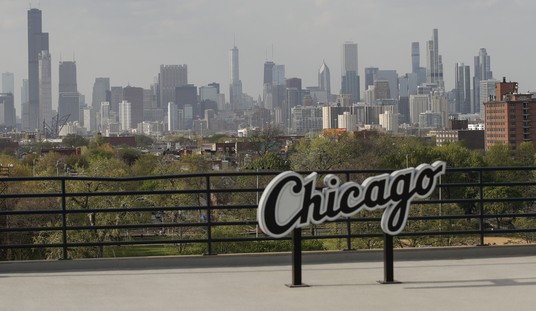Didn’t this already get settled by the Department of Justice’ review of Jeffrey Epstein’s death? “Still, questions linger,” 60 Minutes reported last night, raised mainly by forensic pathologist Michael Baden. While Baden says he’s not reaching a final conclusion, he’s troubled by the fractures of the hyoid bone and thyroid cartilage fractures. “No one had three fractures” in forty years of suicides in New York state prisons and jails, Baden claims:
Dr. Baden, the forensic pathologist hired by Epstein’s family, says the noose that was sketched and included in the autopsy report doesn’t appear to match the wounds on Epstein’s neck. And Baden says, the ligature mark was in the middle of Epstein’s neck, not beneath the jawbone, as one would expect in a hanging. Also puzzling to Baden is that Epstein would make a noose out of a bedsheet when wires and cords were present in his cell, as photographs show. …
Dr. Michael Baden: There were fractures of the left, the right, thyroid cartilage and the left hyoid bone.
This is an autopsy photo of Epstein’s broken hyoid bone, a U-shaped bone that sits under the jaw that part of the tongue attaches to. The thyroid cartilage sits at the front of the neck.
Dr. Michael Baden: I have never seen three fractures like this in a suicidal hanging. Sometimes there’s a fracture of the hyoid bone or a fracture of the thyroid cartilage.
Sharyn Alfonsi: But not three?
Dr. Michael Baden: Very unusual to have two and not three. And going over— over a thousand jail hangings, suicides in the New York City state prisons over the past 40-50 years, no one had three fractures.
One big question raised in this report isn’t so much medical as it is mechanical. Why would Epstein have torn up bedsheets for a noose when he had plenty of electrical cord to use? Epstein was allowed to use a CPAP machine, complete with extension cord, shown in photos of the cell in the immediate aftermath of Epstein’s death. It would have been a lot easier to use those cords rather than fashion ropes out of the fabric found in the cell, or at least it would have been quicker. And furthermore, Baden argues, the fractures could not have occurred without forward pressure on the larynx, which this noose would not likely have provided.
And … what was with the injection wound on Epstein’s arm?
CBS has not made the full report available, but they have a supplemental report up on YouTube. Be aware that there are graphic images displayed in this clip, so take care in choosing to play it:
Baden made an appearance on CBS This Morning to explain his findings so far. The medical issue of the fractures can’t be fully resolved until there is more information about the position of the body, Baden notes, and there is some question as to which noose found in the cell was the one taken off the body.
There was more than one noose found? Apparently so:
It’s important to remember that Baden’s a grandstanding celebrity pathologist, which doesn’t mean he doesn’t know what he’s talking about — but does mean that his speculation should be taken with a grain of salt. Both 60 Minutes and CBS This Morning make a point of noting his self-interest in making a case for potential murder, as the Epstein family is paying him to review the case. There’s not much money or notoriety in saying that the coroner got it 100% correct, after all. That doesn’t get you 14 of 60 Minutes’ minutes, so to speak, nor does it get you a follow-up on the network’s morning show. So far, too, Baden’s not exactly even saying that much; he just has questions.
Even with a healthy dose of skepticism, however, some of those questions seem pretty legit. How did Jeffrey Epstein manage to commit the first successful suicide in this facility in the past 14 years? Why was his body moved before investigators arrived when operating procedures clearly prohibit it? Why does Epstein’s ligature marks have blood on them but the noose apparently does not? One official sloughs off these questions by quoting Sigmund Freud: “Sometimes a cigar is just a cigar.” And this might be one of those cases, too, but until someone provides more answers than questions, the suicide conclusion will never fully get past that normal level of public skepticism.







Join the conversation as a VIP Member